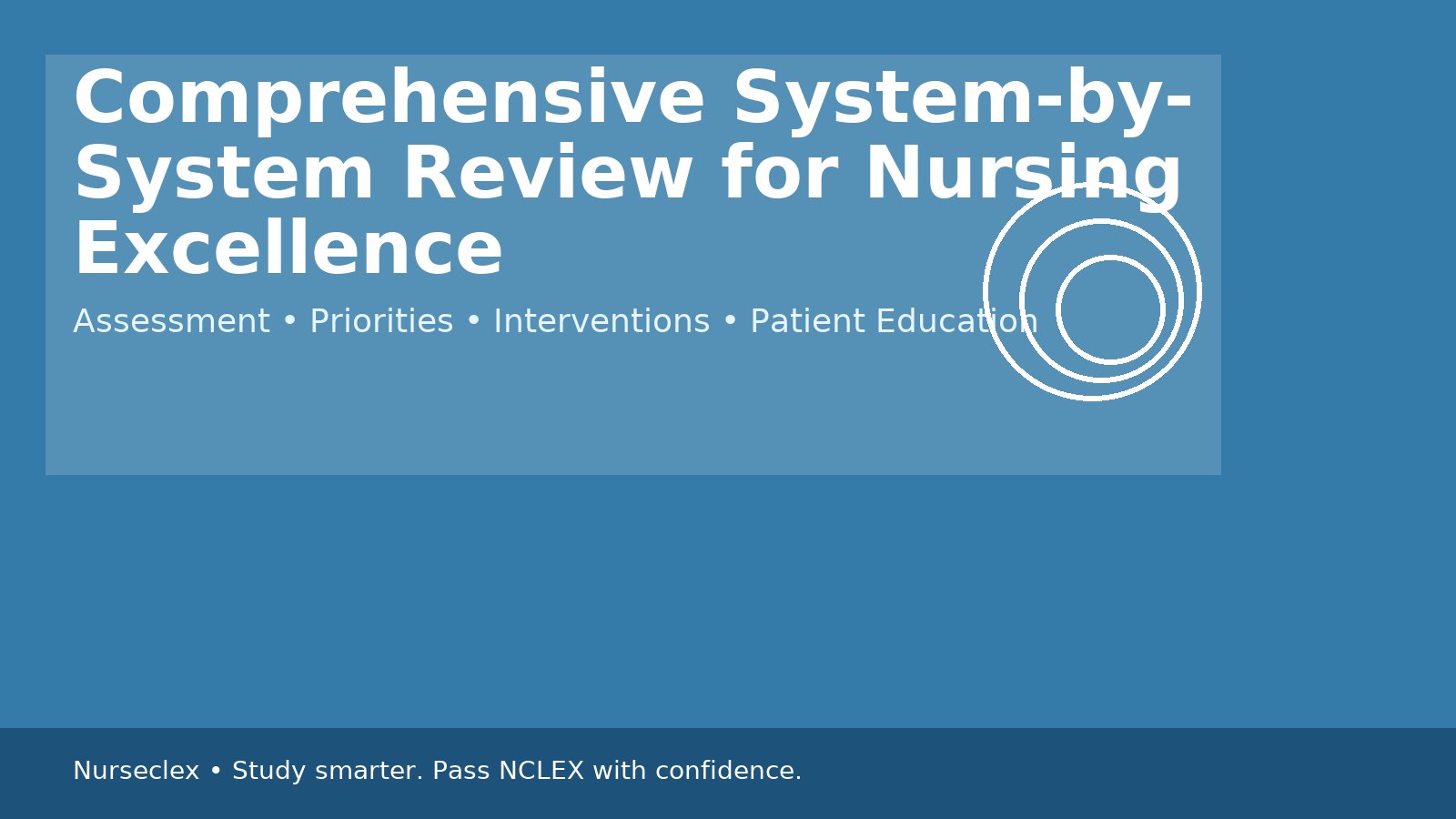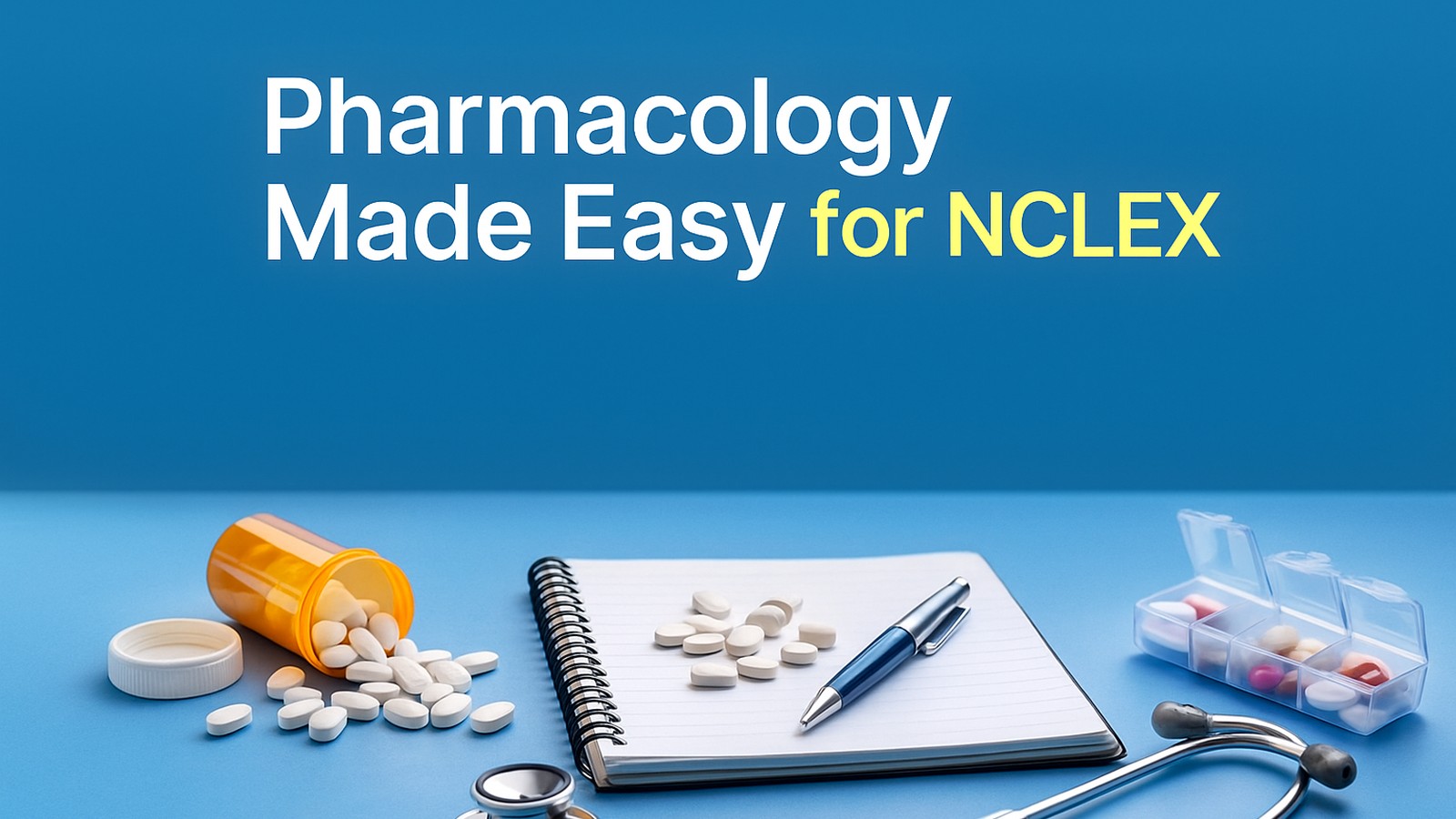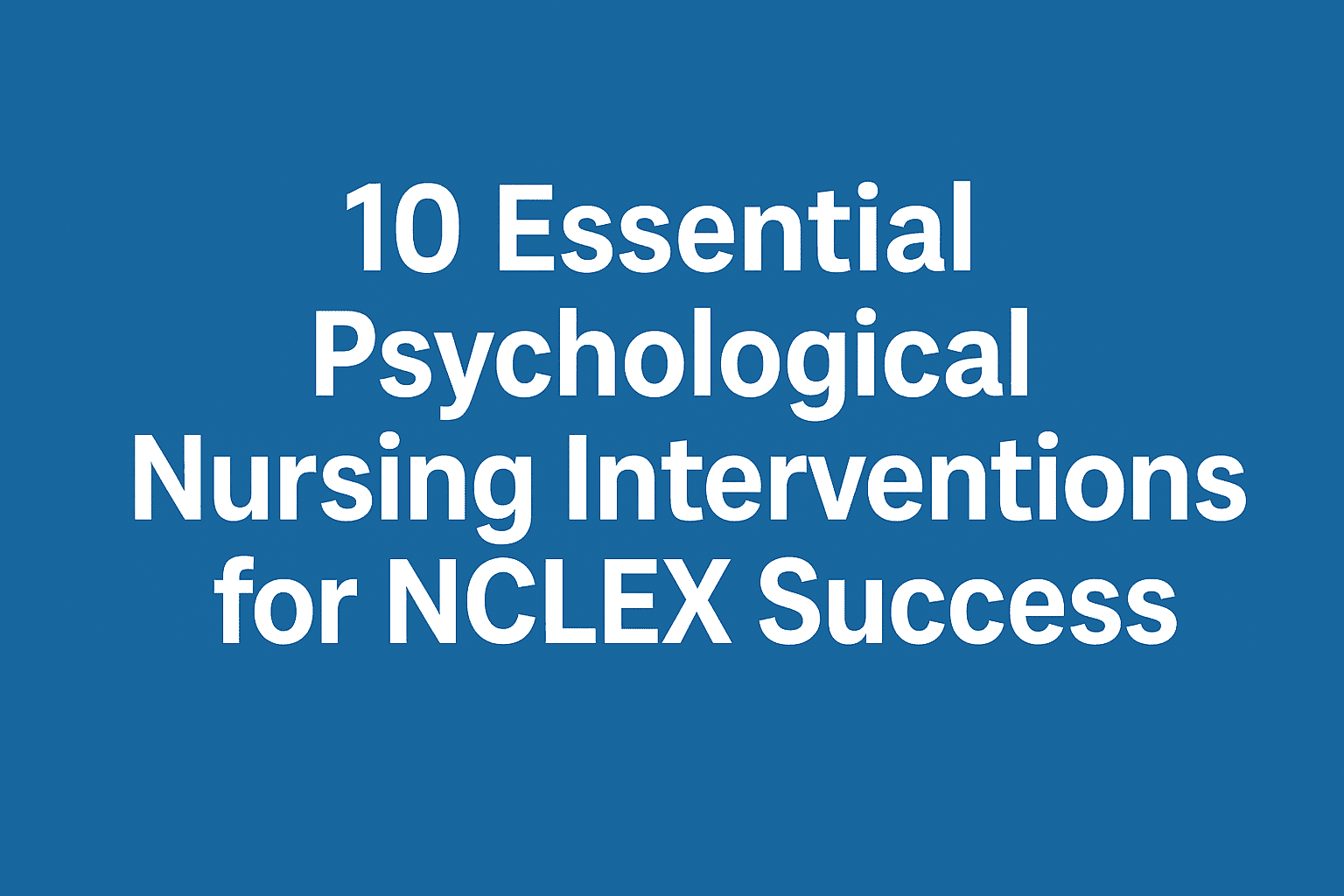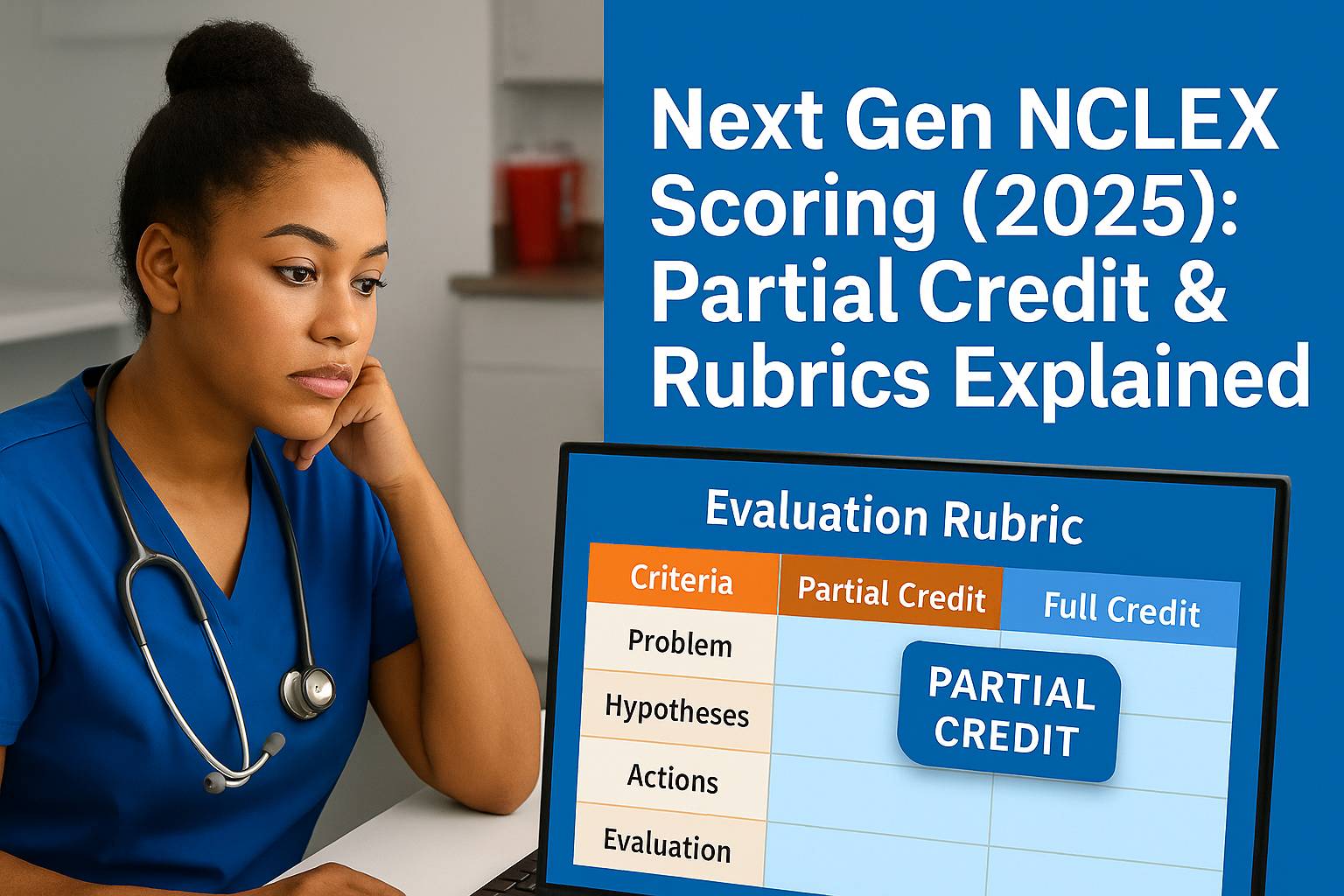Comprehensive System-by-System NCLEX Review (High-Yield)
Cardiovascular
Myocardial Infarction (MI)
-
S/S: Crushing chest pain radiating to arm/jaw/back, diaphoresis, SOB, N/V; atypical in women/older adults.
-
Immediate steps (MONA): Morphine, Oxygen, Nitroglycerin, Aspirin.
-
Also: 12-lead ECG ≤10 min, troponin/CK-MB, beta-blocker, ACE-I, prep for PCI.
Heart Failure
-
Left-sided: Pulmonary crackles, dyspnea, orthopnea, PND, pink frothy sputum, S3.
-
Right-sided: JVD, hepatomegaly, ascites, edema, rapid weight gain.
-
Nursing: Daily weights (same scale/time), I&O, Na+ restriction (~2 g/day), fluid restriction, high-Fowler’s, med adherence.
Hypertension—Patient teaching
DASH diet (low Na+), exercise, weight control, limit alcohol, stop smoking, stress reduction, don’t stop meds abruptly.
Respiratory
COPD vs Asthma (high-yield comparison)
| Aspect | COPD | Asthma |
|---|---|---|
| Nature | Progressive, largely irreversible | Reversible obstruction |
| Onset | Gradual, usually >40 yrs | Any age |
| Triggers | Smoking, pollution | Allergens, exercise, stress |
| Baseline O₂ | Often low (88–92% acceptable per order) | Normal between attacks |
| Appearance | Barrel chest, pursed-lip breathing | Normal between episodes |
COPD care: Short/long-acting bronchodilators, low-flow O₂ (avoid CO₂ retention), vaccines, pulm rehab, smoking cessation (most important).
Asthma care: Peak-flow tracking, ICS controllers, SABA rescue, trigger control, written action plan.
Pneumonia—priorities
Airway clearance (C&DB, positioning), O₂/SpO₂ monitoring, hydration, culture then antibiotics, elder red flag: confusion.
Neurological
Stroke FAST: Face droop, Arm drift, Speech difficulty, Time to call 911 (note onset).
-
Ischemic: tPA if eligible (3–4.5 h), then aspirin after 24 h if tPA given.
-
Hemorrhagic: BP control, no tPA/anticoagulants, possible surgery.
Increased ICP
-
Early: ↓LOC (most sensitive), pupil change, headache, vomiting.
-
Late (Cushing triad): ↑BP with wide pulse pressure, bradycardia, irregular respirations.
-
Nursing: HOB 30°, midline head, avoid Valsalva/hip flexion, hourly neuro checks, mannitol as ordered.
Seizure care
-
During: Protect from injury, time it, side-lying, no restraints/objects in mouth.
-
After: Airway, reorient, document features, med per order.
Endocrine
Diabetes—targets
Pre-meal 80–130 mg/dL; 2-hr post-meal <180 mg/dL; A1c <7%.
Emergencies
| Feature | DKA (Type 1) | HHS (Type 2) |
|---|---|---|
| Glucose | >250 | >600 |
| Ketones/Acidosis | Present; pH <7.3 | Minimal/none |
| Hallmarks | Fruity breath, Kussmaul, dehydration | Severe dehydration, AMS |
| Tx | IV fluids, insulin, lytes | Aggressive fluids, insulin, lytes |
Hypoglycemia
-
Mild (54–70): 15 g fast carb → recheck in 15 min.
-
Severe (<54): Glucagon IM/SQ or D50 IV; monitor closely.
Thyroid
-
Thyroid storm: Hyperthermia, tachy, HTN → antithyroid + beta-blocker + steroids; cool environment, cardiac monitor.
-
Myxedema coma: Hypothermia, brady, ↓LOC → IV levothyroxine + steroids; warm, resp support.
GI & Hepatic
Peptic Ulcer Disease
-
Risks: H. pylori, NSAIDs, steroids, smoking, alcohol.
-
Complications: GI bleed, perforation (rigid abdomen), obstruction.
-
Tx: Triple therapy for H. pylori; PPI; avoid NSAIDs/alcohol.
IBD comparison
| Feature | Crohn’s | Ulcerative Colitis |
|---|---|---|
| Location | Mouth → anus | Colon/rectum only |
| Pattern | Skip lesions | Continuous |
| Depth | Transmural | Mucosal/submucosal |
| Complications | Fistulas/strictures | Toxic megacolon |
Cirrhosis—watch for jaundice, ascites, varices, encephalopathy (asterixis).
-
Encephalopathy: Lactulose (goal 2–3 soft stools/day), limit sedatives, monitor ammonia (<50 mcg/dL).
Renal & Urinary
AKI phases: Onset → Oliguric (<400 mL/24h) → Diuretic (↑UO) → Recovery.
-
Causes: Pre-renal (dehydration, HF), intra-renal (nephrotoxins/contrast), post-renal (obstruction).
CKD stages (by GFR):
Stage 1 ≥90 → 2 (60–89) → 3 (30–59) → 4 (15–29) → 5 <15 (dialysis).
-
Management: BP control (ACE-I), fluid/electrolyte balance, anemia/bone disease care.
Safety & Priorities (always testable)
-
ABCs first; unstable > stable; acute > chronic; safety > comfort.
-
Infection control: standard vs contact/droplet/airborne.
-
Delegation: RN = assess/teach/evaluate; LPN = stable care/meds (no IV push in many states); UAP = ADLs/vitals (stable).
-
Documentation (5 C’s): Clear, Concise, Complete, Correct, Current.
Smart Study Moves
-
Daily mixed Med-Surg questions + full-length sims (CAT style).
-
Review lab values tied to action decisions (K⁺, Na⁺, creatinine, troponin, INR).
-
Case-based learning for clinical judgment.







